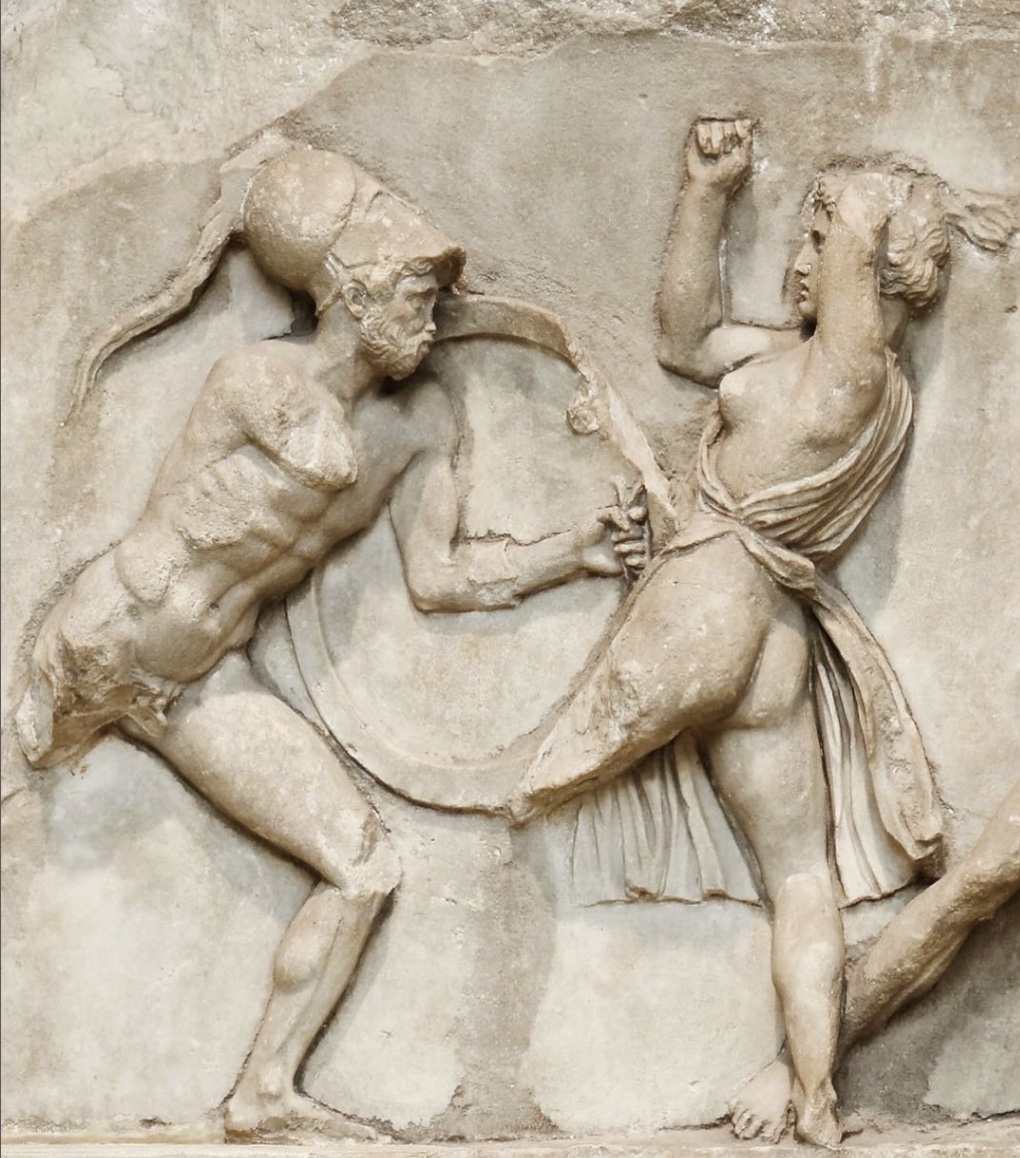This is my favourite relief from the great monument built for the satrap Mausolos by his Greek-steeped, grief-stricken sister-wife Artemisia on his death at Halikarnassos (Bodrum for you modern hedonists).
The monument was gigantic and a sensation, making most ancient ‘Seven Wonders of the World’ list, roughly rectangular in shape, with an imposing podium with Ionic decoration topped with a roof in the form of a stepped pyramid, perhaps topped by a colossal sculpted chariot bearing the royal couple.

Pliny and Vitruvius report that Artemisia hired the leading Greek sculptors of her day – the big greats (mercenaries all, and the biggest name Skopas) each given a side of the monument to populate with relief sculpture. The mausoleum (catch what inspired the name there?) was a wreck by the 19th century when it was rediscovered, and most of the sculpted slabs that remain were reused in 14-16th century Crusader fortifications nearby. So hazarding a guess as to which great name was responsible for these panels is tough (Martin Robertson agonised eloquently about attribution….worth a read.)
The mythologized urge for Amazons has always struck me as peculiar Greek fancy: warrior women who exist almost solely to be marauded. They are often sexualised (as this axe-wielding one), and that seems exactly the point – who are the Amazons if they aren’t fighting the Greeks, and who are the Greeks if they aren’t vanquishing this lesser if exotic Eastern foe?
The regional dynasty in Caria inherited by Mausolos was overtly hellenophilic in most aspects but served Persia at the end of the day, and I do wonder at the choice of decoration – an epic battle between the paradigmatic vanquished feminized barbarians and their vaunted foe to the West?




